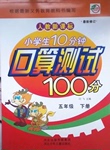题目内容
【题目】(河南省重点中学协作体2016届高三第二次适应性考试)阅读理解。
Something that makes sense is happening in Washington, D.C! Public school kids surrounded by museums and monuments are putting the ready-made learning tools to use — and actually learning.
A trip to see painter Jacob Lawrence’s Migration Series is one of almost 200 trips that Wheelock will organize this year through the nonprofit group Live It Learn It. “For many kids, school is disconnected,” says one of four full-time workers and tour leaders. “With the program, they see how what they are learning is connected to their communities.”
Seven years ago, Wheelock changed a job as a lawyer for one as a four-grade teacher. When he learned that D.C.’s public schools ranked behind those of other cities in many ways, he knew he had to do something different. He took his class to Capitol Hill for a lesson on the three branches of government — and saw his students’ interest develop quickly.
With seed money from a local couple, Wheelock developed detailed lesson plans for trips to the U.S. Holocaust Memorial Museum, the Lincoln Memorial. The group also has classes for trips to the Anacostia River, boat rides to historical forts. Word spread, and now fourth, fifth, sixth graders from the neediest public schools in the District participate.
“I’m not brave enough to take my class to a museum for over an hour!” says teacher Cathy McCoy, gesturing toward her students. “But look With Live It Learn It, what the kids learn today they’ll remember for a lifetime.”
【1】Matthew Wheelock once had an occupation as a _______.
A. teacher B. printer
C. leader D. lawyer
【2】According to the first two paragraphs, public school kids in Washington D.C. _______.
A. like to have school disconnected
B. are warmly welcomed by museums and monuments
C. are making the resources at hand available
D. are learning by going to different communities
【3】Matthew Wheelock started the new change for the reason that _______.
A. he saw his students’ interest develop quickly
B. more graders from the neediest public schools wanted to participate
C. D.C.’s public schools ranked behind in many ways
D. a local couple sponsored him a sum of seed money
【4】What will the lessons be like with Live It Learn It in Cathy McCoy’s opinion?
A. Eye-catching. B. Challenging.
C. Forgettable. D. Impressive.
【答案】
【1】D
【2】C
【3】C
【4】D
【解析】
试题分析:本文属于记叙文,介绍了华盛顿地区的公立学校把把周围的博物馆和纪念馆都充分利用了起来,让这些公共资源成为他们学习的工具。
【1】D 细节理解题。根据第三段第一句Seven years ago, Wheelock changed a job as a lawyer for one as a four-grade teacher.可知Wheelock曾经是一名律师。故D正确。
【2】C 推理判断题。根据第一段第二句Public school kids surrounded by museums and monuments are putting the ready-made learning tools to use — and actually learning. 可知华盛顿的公立学校把周围的博物馆和纪念馆都充分利用了起来,让这些公共资源成为他们学习的工具。故C项正确。
【3】C 细节理解题。根据第三段第二句When he learned that D.C.’s public schools ranked behind those of other cities in many ways, he knew he had to do something different.可知Matthew Wheelock了解到华盛顿的公立学校在很多方面都落后于其他地区的公立学校,所以他才决定做一些事情来改变这一情况。故C项正确。
【4】D 推理判断题。根据文章最后一句“But look With Live It Learn It, what the kids learn today they’ll remember for a lifetime.”可知通过“With Live It Learn It”这个项目,孩子们现在所学到的知识将会永远被记住。说明在这里所学到的知识会给孩子留下深刻的印象。故D项正确。

 小学生10分钟口算测试100分系列答案
小学生10分钟口算测试100分系列答案【题目】读下表“2008年我国人口统计表”,完成下列各题。
项目 | 年末数(万人) | |
总人口 | 132802 | |
其中 | 出生人口 | 1608 |
死亡人口 | 935 | |
城镇人口 | 60667 | |
乡村人口 | 72135 | |
男性人口 | 68357 | |
女性人口 | 64445 | |
65岁及以上人口[ | 10956 | |
【1】有关我国人口增长变化因果关系的叙述,正确的是:
A.人口基数大,自然增长率高
B.出生率高,每年净增人口多
C.死亡率低,老龄人口增加快
D.经济增长很快,人们生活水平高,人口出生率高
【2】我国人口增长带来的主要问题是:
A.教育、医疗压力过大
B.城市化发展速度过慢
C.劳动力资源严重短缺
D.环境承载力已趋极限